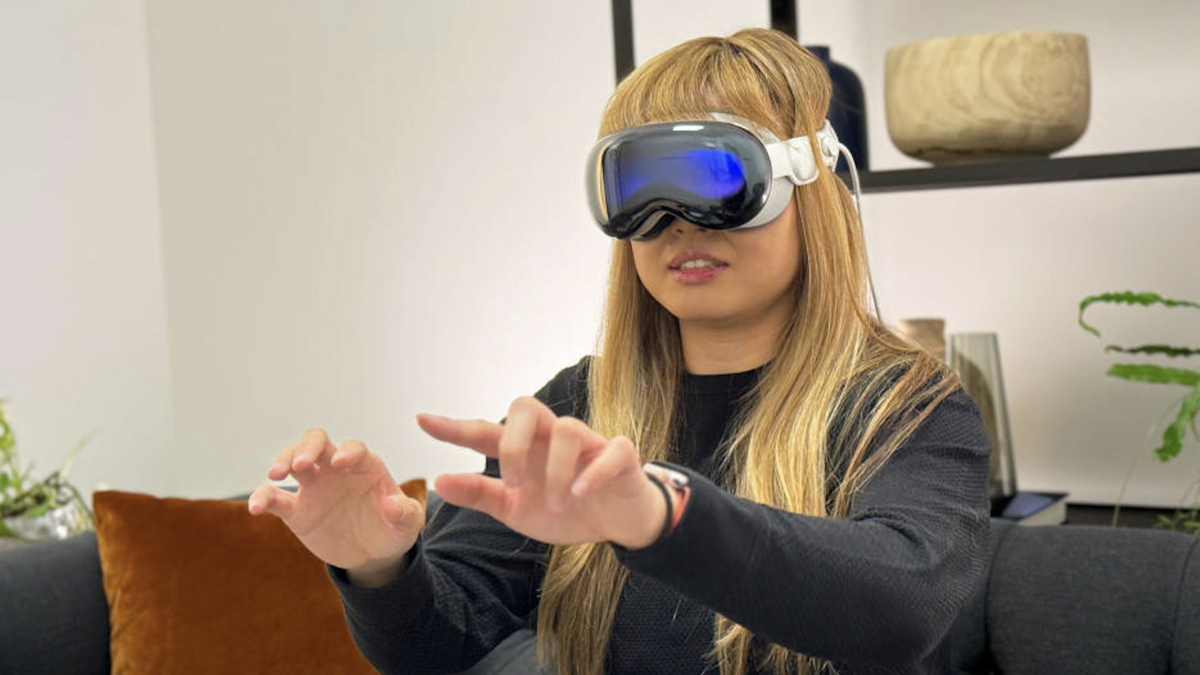Formovie Theater Test: An ultra-short throw 4K video projector with impressive contrast

Chinese manufacturers are gaining ground in the video projector market. Thus Formovi seems to have scored a major hit with his theater which has received rave reviews internationally. This ultra-short throw model benefits from interesting features on paper with 4K UHD definition by Wobble, image size up to 150 inches, Android TV 11 OS and brightness of 2800 ANSI lumens, contrast of 3000:1 and Dolby Vision. Consistency which is very rare in the market.
It operates using an ALDP 4.0 tri-laser source and has a claimed lifespan of 20,000 hours, much longer than a classic UHP bulb, which sees 13 years of activity at 4 hours per day. Bonus, and not least, the theater benefits from a 30 W Bowers & Wilkins audio system.
We can’t wait to get our hands on it for testing and see if this video projector deserves its crown as the best ultra-short throw model of the moment. The Formovie Theater is sold at a recommended price of €3,200, which is slightly more expensive than its direct competitors (Dangbei, Hisense, Xgimi), but much less than, for example, the Samsung Premier or the Sony VPL-XW5000. It is currently available on sale for around €2,800 and this price can sometimes go down a bit more.

2D image quality
When the video projector is turned on, focus is handled automatically, but without automatic keystone correction. So it will be necessary to place the theater properly in front of the wall or screen so that it does not have to be manually adjusted with the proposed interface. If you store this video projector after each use, you will have trouble positioning it perfectly.
Focus is generally good, but the top corners aren’t quite as sharp. This can be remedied by using a dedicated menu, which can greatly improve the result. Otherwise, you need to place the projector 14 cm from the canvas to get an 80 inch image, 33 cm for 120 inch and 49 cm for 150 inch.
Keystone correction menu.
Thanks to tri-laser technology, the “rainbow” effect seen by some users is less present than with single laser projectors, but not gone. Some people are sensitive to it and see colored dots around light objects on a dark background, others not at all.
Optical part and presence sensor.
There are many colorimetry settings on this Formovie theater (color temperature, hue, saturation, luminance, etc.). A great item for those willing to get their hands dirty to take advantage of better calibration. Out of the box, however, the results are not very good… It is also possible to change the light power of the theater in the projector menu: in office mode for the brightest, visualization for versatile use and reduce the night brightness level if you want.
There are plenty of settings to calibrate Formovie Theater.
By selecting film mode in SDR and enabling color space in the advanced settings menu, we were able to reduce delta E to 5.7. A true result for a video projector, but higher than the threshold of 3 beyond which we perceive colorimetric drifts with the naked eye. There are also other adjustment modes: Sport, I (for games, error in translation) or Bright Colors or Children, not very meaningful to change the color rendering. Some video projectors are now able to stay below a delta E of 3 straight from the factory, but this is still rare.
Colorimetry

Delta E = 5.7
The average color temperature of 7150 K is slightly cooler, but it does not fall far from the reference 6500 K. Similarly, average gamma is stable at 2.1 and gray levels are well reproduced on screen, although the absolute target average is 2.2.
Gamma roughly follows the reference curve.
Gamma

2.1
The average color temperature is a bit too cool.
temperature

7150K
In contrast, the result is impressive for an ultra-short throw video projector. We actually calculated a contrast of 2170:1 in film mode, and a bit more than 3000:1 in standard mode.
Formovie announced 107% coverage of the Rec 2020 space, but the results are less rosy in terms of precision. However we measured 81.7% coverage using our probe, which is one of the best results in our comparison. The DCI-P3 space, most commonly used in cinema, is 99.4% covered. Perfect, then.
HDR
Formovie Theater is HDR, HDR 10+ compatible and the only model on the market to support Dolby Vision. In Visualization Brightness mode and Standard mode, this can rise to 150 cd/m², but we recorded 80 cd/m² when activating Film mode, which is a bit more disappointing. For comparison, many projectors are around 100 cd/m², with our best reaching 200 cd/m². In any case, it’s best to use the ForMovie theater in the dark to maximize dynamism and contrast.
EOTF

Lum. Maximum standard mode: 106 cd/m²

Left, EOTF curve in HDR10, 10% window; On the right, the HDR luminance curve, 10% window.
On the other hand, colorimetry in HDR is disastrous. Even in film mode, we measured a delta E of 21, which is pretty high. We were able to land on a delta E of 13 using calibration profiles found on the Internet, and it is undoubtedly possible to do better by calibrating the video projector according to room conditions (canvas, wall, ambient light). . The result is probably better on other theater series, but our test model is unfortunately disappointing.
Delta E is too high in HDR.
Input lag
l’Input lag It peaks at around 43ms when activating game mode so the theater volume is very low. So there will be a delay between the activation of the controller and the display of more than two images at the same time. ‘Screen. This isn’t a big deal in single-player play, but can be important in competitive multiplayer. Be careful, in standard condition, theInput lag is much larger (109 ms).
Also note that ALLM (Auto Low Latency Mode) technology is present on this model; So the home console will be detected automatically. The projector will switch to gaming mode to minimizeInput lag.

Functions and ergonomics
The ForMovie Theater is a large video projector that weighs 9.8 kg and measures 55 cm in length by 35 cm in depth and 11 cm in height. Other than plugging in its power cable, there’s nothing to report for installation.
Formovie theater is very large.
The feet are height adjustable using two dials on the sides. A sensor nests on the lens layer to cut off the laser if someone walks past it. Effective protection for the eyes, but which does not work every time. The invention proved much less responsive than the Xiaomi 4K Laser, for example. It is possible to attach the video projector to supports and even to the ceiling, but the easiest is to place it on the floor or on a piece of furniture.
Dials allow you to adjust the height of the legs on the sides.
The remote control is really basic, as is often the case with Android TV. We find a wheel for navigating through menus, volume keys and focus and keystone settings, as well as shortcuts to general settings, YouTube or home. A microphone is present for Google voice commands, but the remote control is not backlighted, which quickly becomes annoying in a darkened room while watching a movie.
The remote control is pretty basic.
The Android TV 11 operating system is quite fluid and includes many streaming apps like Amazon Prime Video, Arte, Disney+. Alas, as usual with video projectors, Netflix is missing subscribers. The best option is to use a third-party multimedia box like Amazon Fire Stick, Nvidia Shield or Apple TV to get access to all common services and enjoy better fluidity.
Netflix is unfortunately not natively compatible.
Connectivity is complete with three HDMI 2.1 ports, including one eARC compatible, two USB-A 2.0 ports, a mini-jack output, an SPDIF optical input and an Ethernet port.
Connections at the back.
The integrated speakers give really good results for a video projector. Bass is present (but restricted by the physical capabilities of the box) and the rest of the spectrum is well reproduced. That said, you shouldn’t push the volume too much, because above about 50%, the distortion becomes unpleasant. Stereo space is also limited and doesn’t really extend beyond the product. Better to turn to a dedicated soundbar for a more immersive experience.
The speakers are quite effective.





